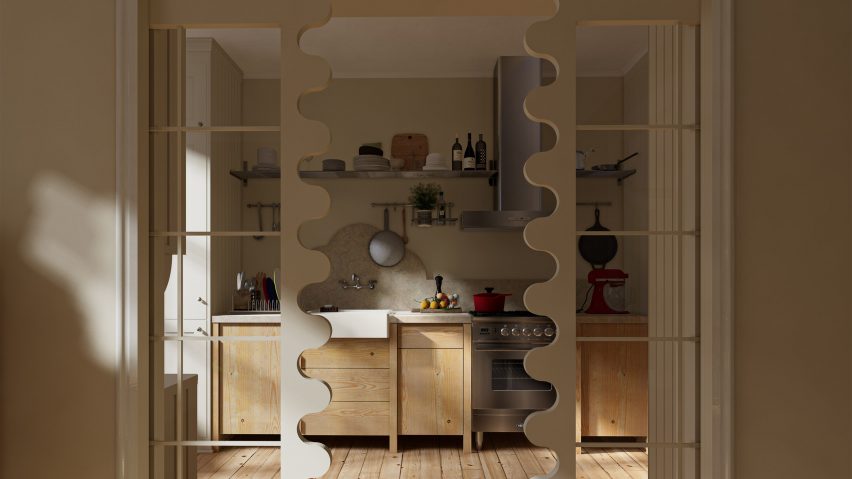
Christoffer Jansson passes off virtual apartment as Instagram home renovation project
Swedish designer Christoffer Jansson created a virtual apartment and pretended to live in it for months as part of a social experiment he exhibited at this year's Stockholm Furniture Fair.
Over a series of 12 rendered images shared on Instagram, the Uncanny Spaces project saw Jansson spin a story about purchasing and renovating a home, which he designed based on a real flat on Stockholm's Heleneborgsgatan.
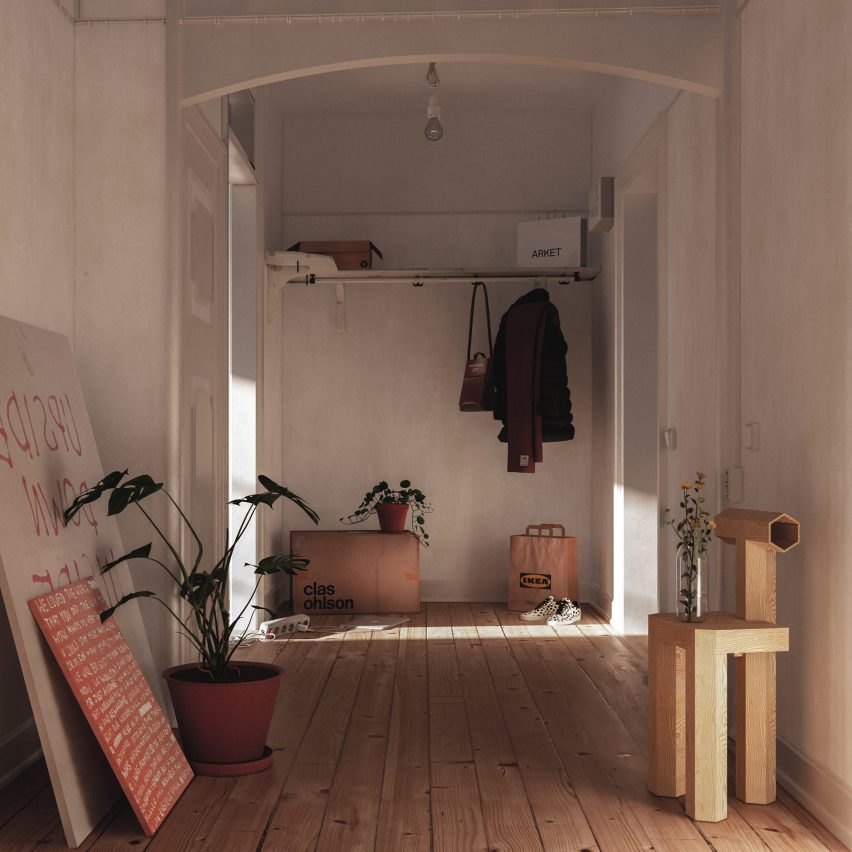
The digital replica was modelled on the actual dimensions of the 89-square-metre apartment – ascertained during an open-house viewing – and filled with virtual copies of some of the designer's own belongings to complete the illusion.
He even went so far as to photograph details such as the cracked wallpaper and weirdly placed electrical outlets found in the real flat, so that he could replicate them using 3D modelling and rendering software.
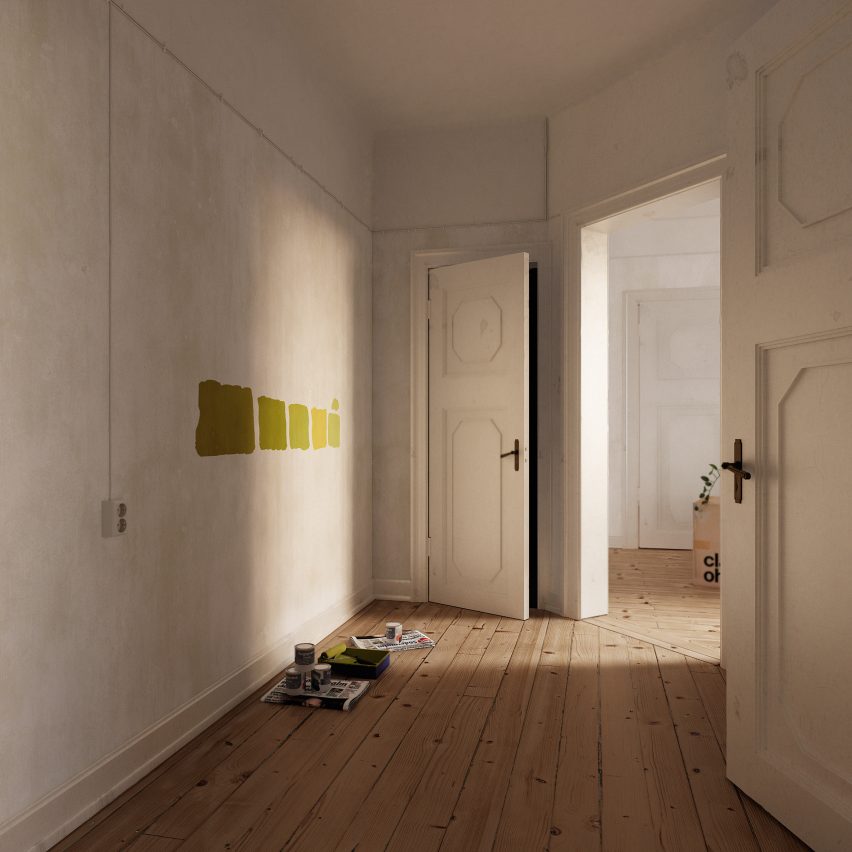
"My intention was to explore the home as a tool for communicating status and identity on social media and to discuss the impact of rendered images within interior architecture," Jansson said.
"I also wanted to challenge my rendering skills and see if I would be able to convince the viewer that the apartment physically existed."
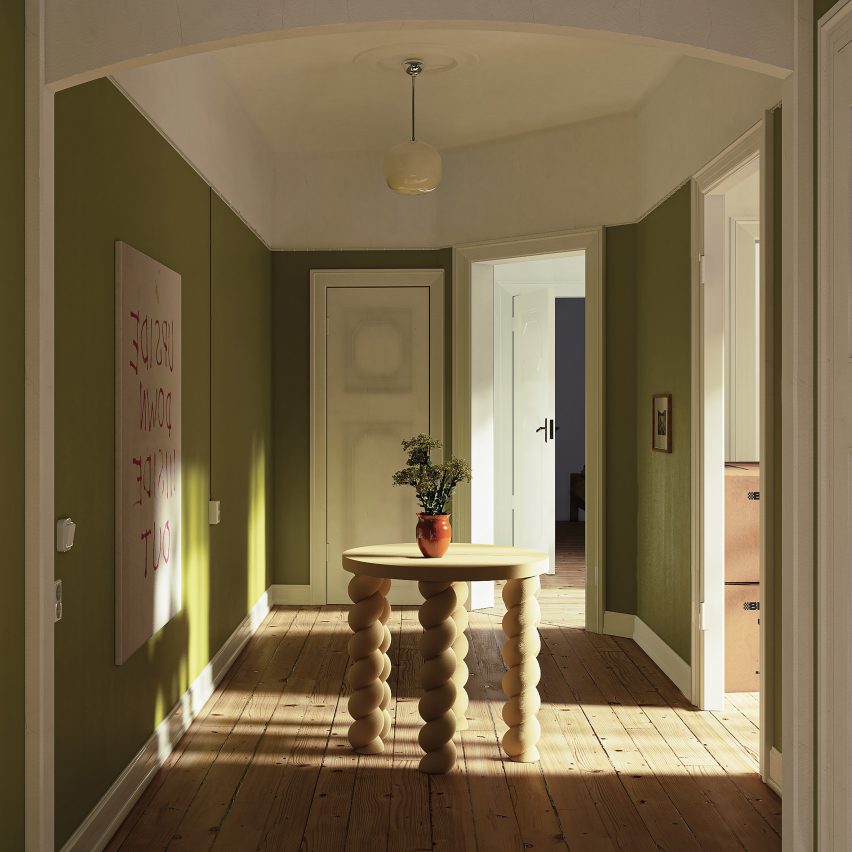
The ruse proved so convincing that a major Swedish interiors magazine asked to photograph the nonexistent apartment. And fellow students at Konstfack university questioned Jansson on how he could suddenly afford a multi-million-pound apartment in central Stockholm.
Over the course of two months, he posted the results to a dedicated Instagram account designed to mimic the separate profiles that homeowners will sometimes create for their renovation projects.
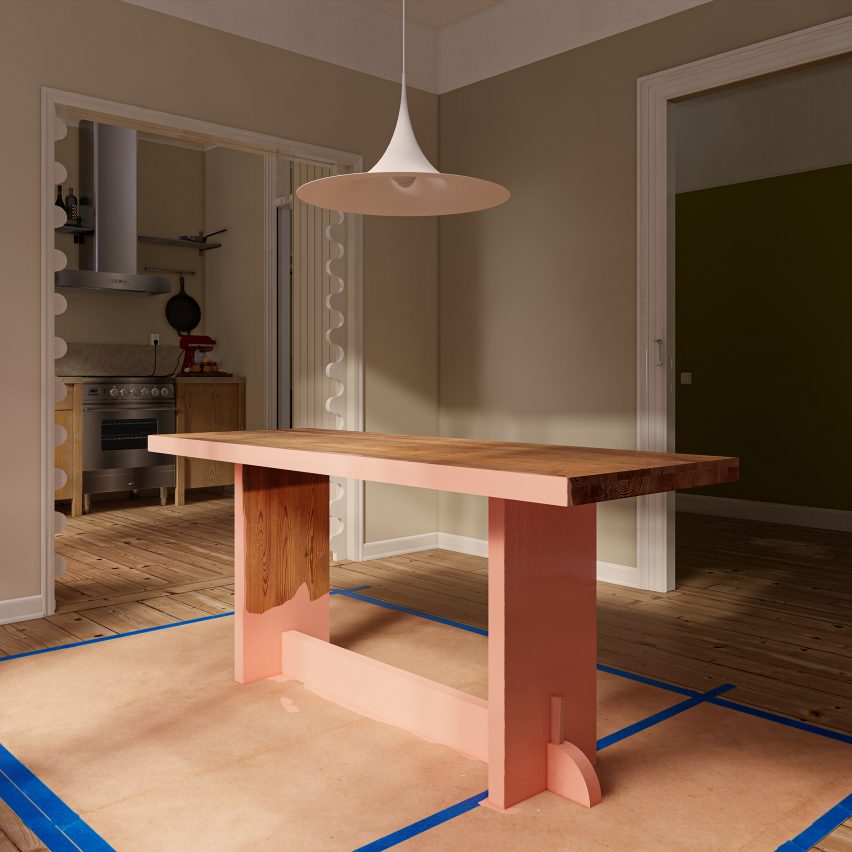
The earliest renders show the apartment as an empty shell, slowly being filled with boxes and IKEA bags as well as like-for-like recreations of Jansson's personal belongings, such as his Marshmallow Table, every single one of his books or the jacket he wore on that particular day.
Jansson also populated the virtual home with internet-famous design objects such as Ettore Sottsass's wavy Ultrafragola mirror or the Lovö dining table by Axel Einar Hjorth to comment on the rise of the "Instagram aesthetic".
"The constant flow of images on social media is affecting our attention span and for interior architecture, it's becoming increasingly important to find ways to quickly capture the viewer's attention," he told Dezeen.
"A clear consequence of the fast flow of images is the so-called 'Instagram aesthetic', which is characterized by geometric or curved shapes, distinctive colour schemes, tiled floors that form graphic patterns and clear contrasts between glossy and matte," he continued.
"It's not the physical aspects of the room that are prioritised, instead the ability of the interior to function well in the image is what is valued most, which negatively affects the physical experience of a space."
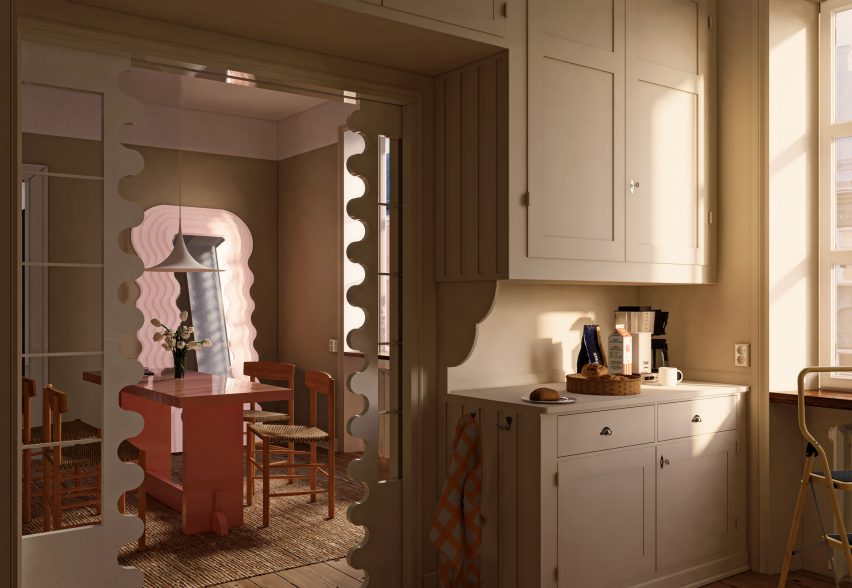
Throughout the project, Jansson worked to provoke and integrate the account's followers into the design process, for example by taking a poll on what colour to paint the hallway or by pretending to paint a piece of priceless antique furniture bright pink.
Towards the end of the experiment, the designer began to speed up the timeline of the fictional renovation, as well as making the renders evermore eerily perfect to see if his followers would notice that the apartment was fake – although none ever did.
By exploring these reactions, the designer hoped to draw attention to the way we use images of our homes to present idealised versions of ourselves, which in turn sets unrealistic standards for our real living spaces.
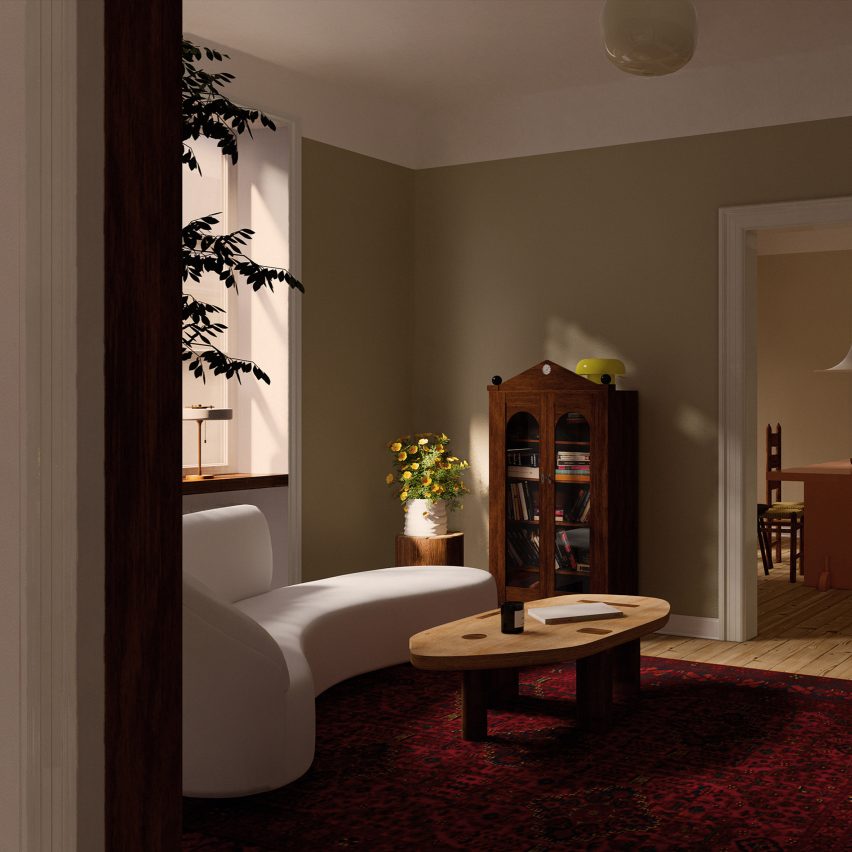
"Today, we have access to observe the everyday life of others and display our own to the public through social media," he said.
"The constant exposure generates unattainable ideals and gradually shifts the barrier of private and public, which makes it more important than ever to present each and every part of our home in a favourable way."
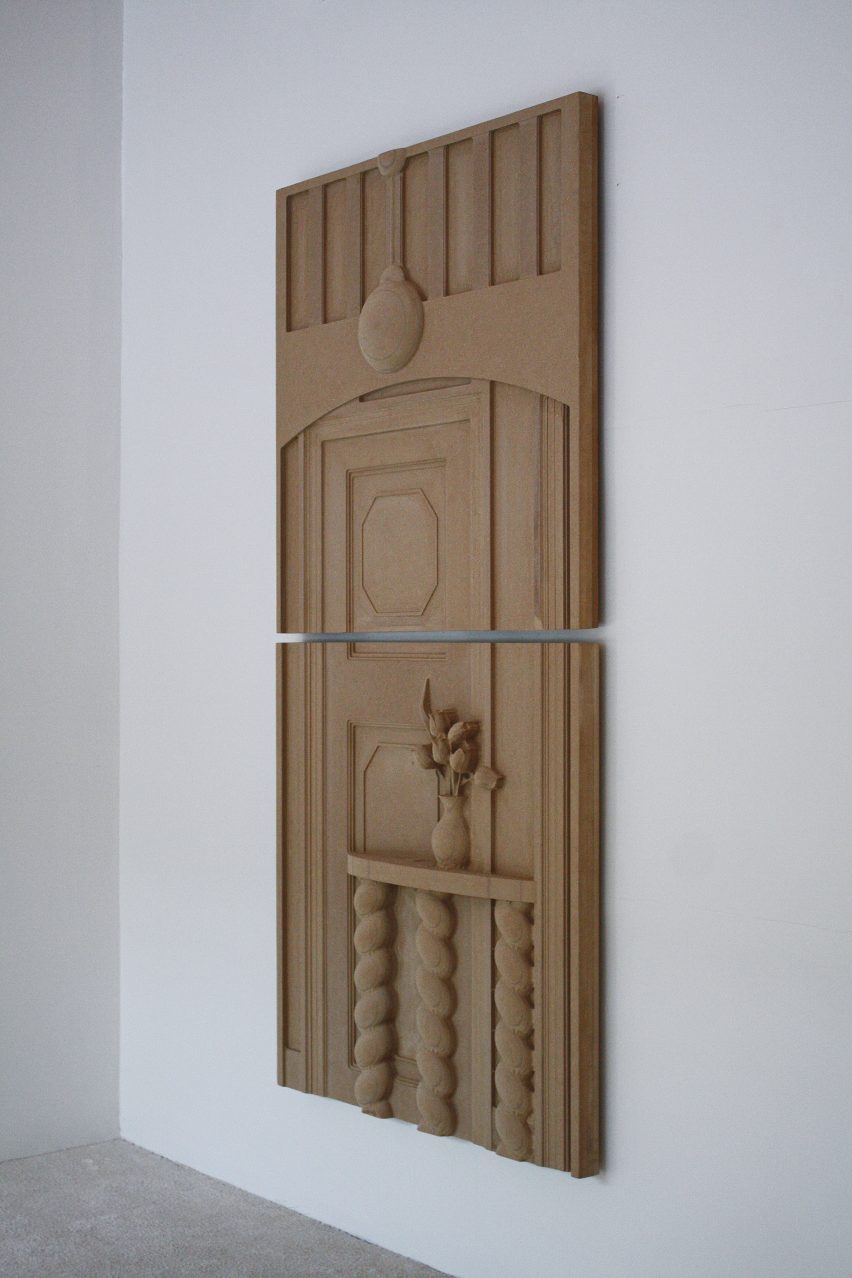
At the 2023 Stockholm Furniture Fair, Uncanny Spaces was showcased as part of the annual Ung Svenks Form exhibition of work by young Swedish designers.
To represent the project in real life, Jansson created a wood relief that depicts a flattened image of his 3D virtual home, realised with the help of digital modelling software Rhino and a CNC-milling machine.
The project does not touch on the rise of the metaverse, for which designers are increasingly creating virtual furniture, clothing, buildings and entire cities. But Jansson expects the advent of a parallel virtual world will likely exacerbate the issues explored in his project.
Uncanny Spaces was on show as part of the Ung Svenks Form exhibition at the 2023 Stockholm Furniture Fair from 7 to 11 February. Browse our digital guide to the festival or visit Dezeen Events Guide for more architecture and design events taking place around the world.